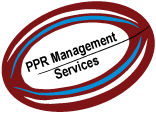There’s nothing more motivational for a blogger than to know that someone is reading your blog. And when they ask for more, or a follow up to a post, that will keep you going for a while. Sexy Lady (?) wants some follow up on the Hard Times Offer Chance to Improve post. Thanks for reading, and sorry for the delayed response.
Kaizen is the term for Continuous Improvement. This is a fundamental principle of the Lean Management system, and for good reason. Even in the best of times business is not easy. Conditions change constantly. Procuring materials and supplies, finding the right people to keep you moving forward, changing customer tastes, changing market and economic conditions are all part of the day-to-day. The ever more global marketplace of competition makes any business a wild ride. So even in the best of times it is important to continuously strive to improve your organization so that you can either remain in front of the pack or gain ground to move to the front.
Continuous improvement means looking at everything you do and making it better. The hard part for many organizations, though, is to see what you’re looking at. On the surface, many things you do, your processes, might look like they’re just fine and don’t need any improvement. Other processes might not even need a close view to know they need improvement. But how many times have you seen something that needs to be improved, but it just never gets done? Kaizen means seeing what you’re looking at, looking below the surface of some processes, and getting off your bum and fixing the things that you’ve been putting off.
Kaizen isn’t so much a technique, but a mindset. It’s a way of thinking where you never accept that the way you do things is good enough, they can always be done better. Your processes can always be more effective and more efficient. Efficient means using fewer resources to get the same result or using the same amount of resources to get more done. Resources include time, people, materials, equipment, space, whatever it is you use to get the job done. Effective means that you accomplish your goals. And each process has a goal.
Your organization as a whole has goals, or you should have clearly defined goals. Every process, a process simply being a series of tasks to do a job, should also have a clearly defined goal. Have you ever had a job where you performed some task and always wondered why you did it? You knew it wasn’t necessary or could have been done much better, but you had to do it anyway? That’s because no one ever defined, or questioned, the goal of that process and how it supported the larger process or the goals of the organization. I’ve experienced this first hand a number of times. It’s common with reports. At some time, for some reason, someone wanted a report, and it might even have been useful at the time. But over time the report had become unnecessary, but nobody wanted to stop generating it. On more than one occasion I’ve stopped generating and distributing reports that were unnecessary – and no one even noticed! That process was not only in need of improvement, it was in need of elimination. If you look, I’ll bet you can find many processes that fit this same criteria. And it’s not always something as innocuous as a report. Sometimes there are steps in a manufacturing process that can and should be eliminated.
More often, though, a step or series of steps must be performed, but they can be done much differently than they are now. They can be done in a different way that takes less time, fewer people, less materials or space, and less money. But you have to look, and you have to see. Look at everything you do. Do three people really need to approve that? Do you really have to write that down AND enter it into the computer? Do you really have to enter that manually, can’t it be done automatically? Do you really need to send a (signed) purchase order to your vendor, can’t you just send them an electronic signal (after you’ve set up an agreement on terms such as quantity for re-orders, price, etc.)?
The point is, examine everything you do, be sure you know why you’re doing it, and find a way to do it better. Every improvement doesn’t have to be a big breakthrough. Small, incremental improvements add up quickly. Better small improvement than none at all.
I’ll continue this thread in future posts.
Subscribe to Let's Talk Business!
Subscribe to:
Post Comments (Atom)













No comments:
Post a Comment